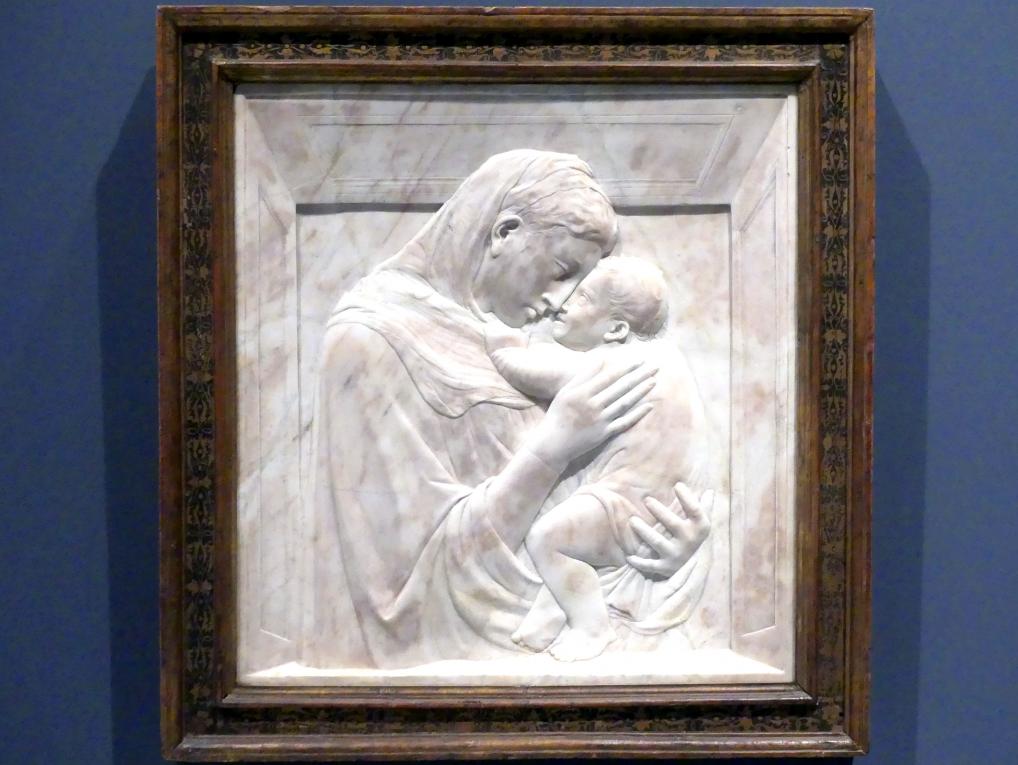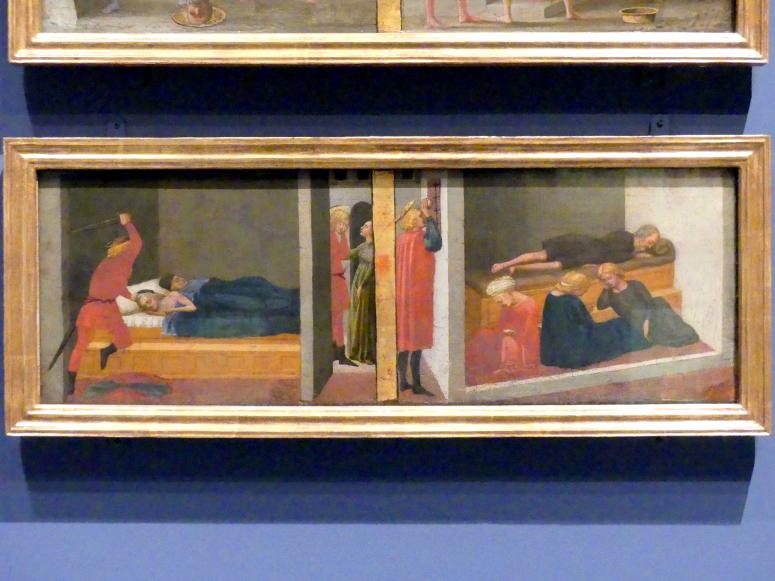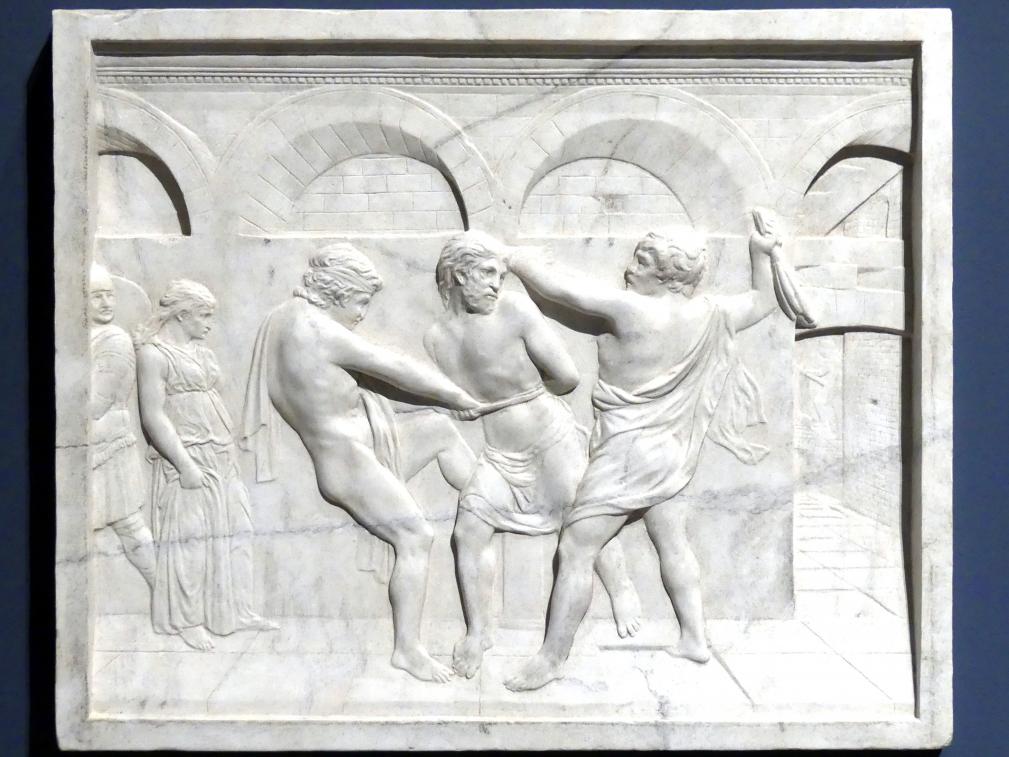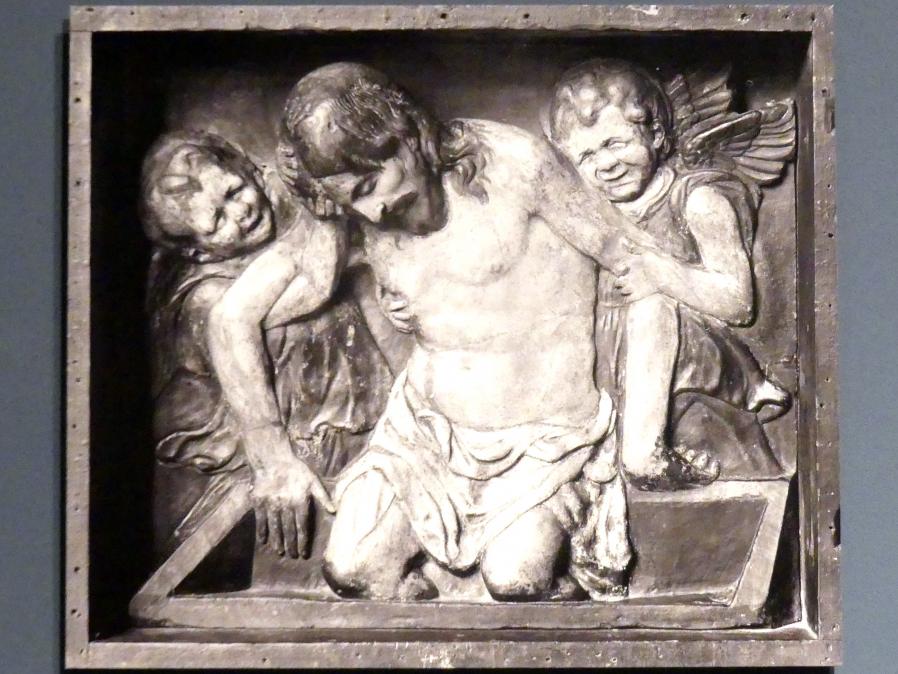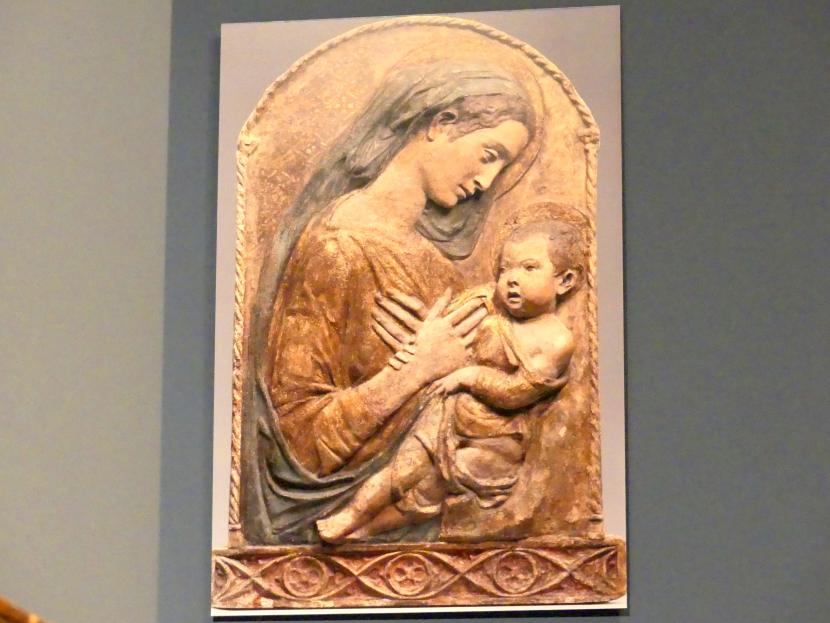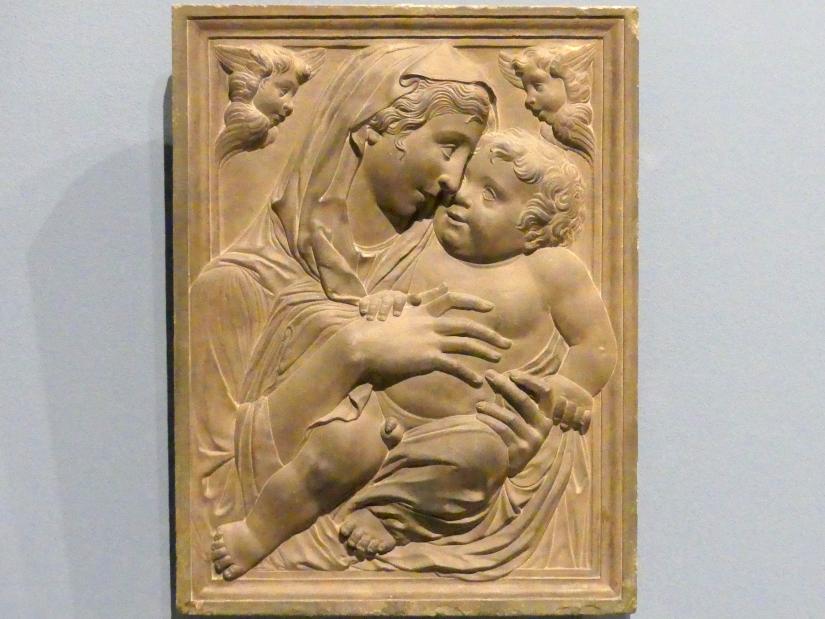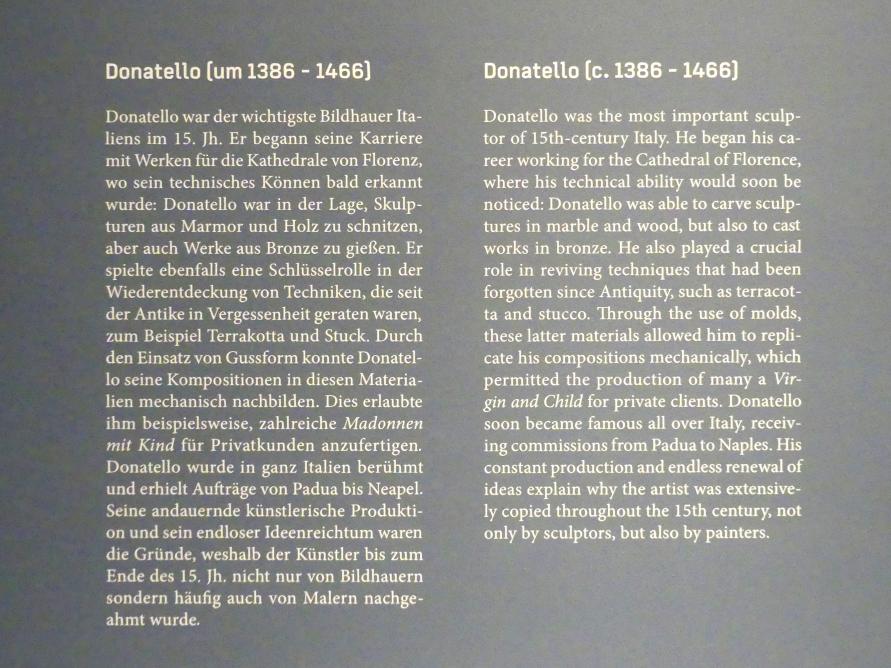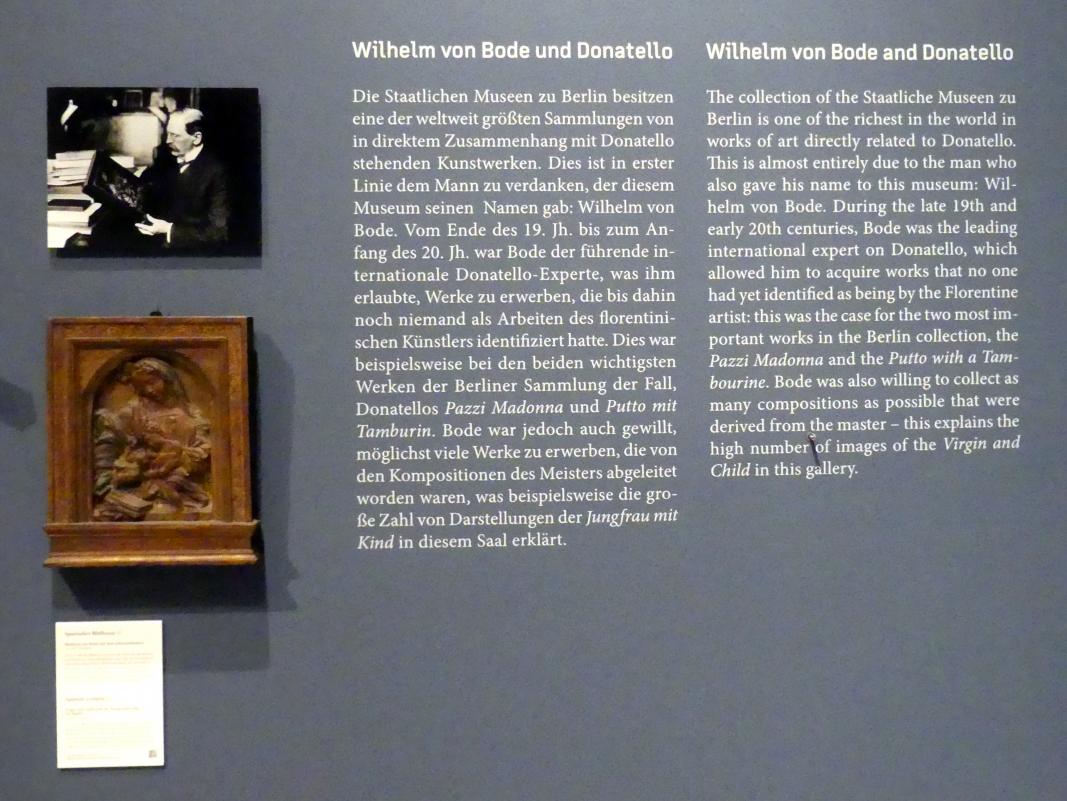Position Berlin, Bode-Museum
Bedeutende Künstler in Berlin, Bode-Museum, Saal 121 (1412–1500)
Künstler in Berlin, Bode-Museum, Saal 121
Desiderio da Settignano (Umkreis)
um 1430 Settignano, Toskana - 1464 Florenz
Donatello
um 1386 Florenz - 1466 Florenz
Donatello (Nachahmer)
um 1386 Florenz - 1466 Florenz
Donatello (Nachfolger)
um 1386 Florenz - 1466 Florenz
Donatello (Werkstatt)
um 1386 Florenz - 1466 Florenz
Fra Angelico (Guido di Pietro)
um 1386 bis 1400 Vicchio bei Florenz - 1455 Rom
Jetzt: Berlin, Bode-Museum, Saal 121 (Inventar-Nr. 58D)
1426
Berlin, Bode-Museum, Saal 121 (Inventar-Nr. 1470)
um 1435
Berlin, Bode-Museum, Saal 121 (Inventar-Nr. 1162)
um 1456–1460

